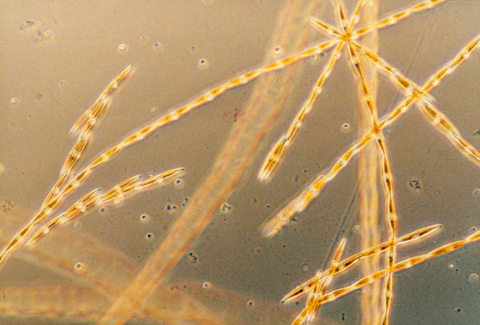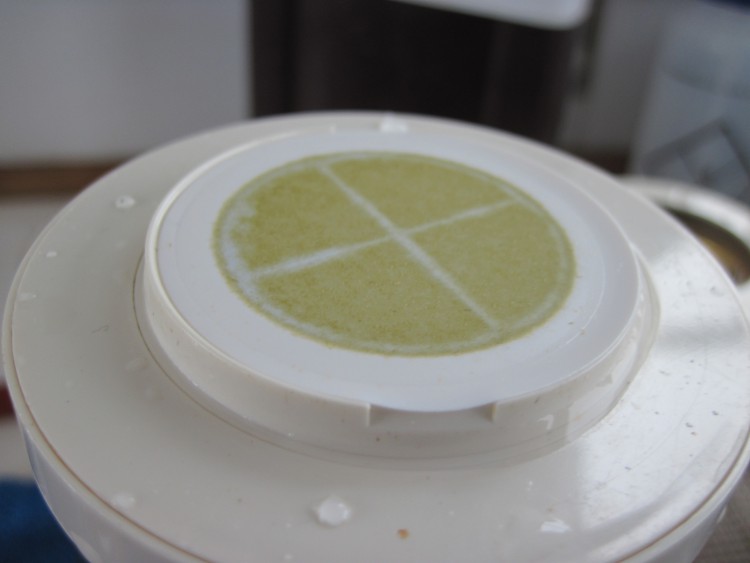High levels of domoic acid, a shellfish toxin, are correlated with warmer ocean temperatures offshore of Oregon and Washington. An NCCOS-supported research team led by scientists from Oregon State University, the University of Oregon, and the Oregon Department of Fish and Wildlife found an association between domoic acid levels in shellfish and climate-scale warm ocean conditions that gives a unique, large-scale perspective relative to previous work. The strong connection with anomalously warm ocean conditions, announced by NOAA last week, has implications for greater outbreak occurrence as oceans continue to warm due to climate change.
The team also produced a climate-based model, which predicts the time and location of domoic acid levels in Oregon and Washington shellfish that could exceed public safety limits. This tool, along with the study’s findings, are expected to lead to enhanced West Coast HAB forecasting and will enable targeted fishery closures and openings to avoid economic distress while protecting public health.

These findings came out of a first of its kind Oregon HAB monitoring and research pilot project aimed at demonstrating a viable strategy to address state, regional, and NOAA research and management needs. TheNCCOS-sponsored Monitoring Oregon Coastal Harmful Algae (MOCHA) project was Oregon’s first coastal HAB monitoring and research program.
The 5-year project (2007-2012) funded by NOAA MERHAB collected the first extensive time series database of the Oregon coast’s biological, chemical, and physical variables in both the surf zone and offshore habitat over a variety of sampling scales; scientific data necessary to describe both HAB occurrence in Oregon and the underlying ecological mechanisms to inform future HAB monitoring and forecasting.
HAB events in Oregon along the West Coast are increasing in frequency, duration, and intensity and are increasingly threatening to coastal economies, ecosystems, and public health. Two of the major algal toxins of interest along the West Coast are domoic acid (DA), produced by some species of the diatom algal genusPseudo-nitzschia, and saxitoxins (STX) that are produced by certain dinoflagellate algae, including some species ofAlexandrium. Prior to the MOCHA project, these toxins and algae had been understudied along the Oregon coast in comparison to other West Coast states.

Historical shellfish toxin databases (decades long) and more detailed case-study observations of two individual HAB events that occurred during the MOCHA project were compiled to provide the first detailed overview of HAB occurrence in the Oregon coastal region. The case studies investigated the following questions by combining shipboard and coastal HAB monitoring data with concurrent wind and sea surface temperature (SST) data: (1) how informative are HAB cell counts at the coast as a proxy of HAB events; (2) what was the spatial extent of these HAB events offshore; (3) what can be learned regarding HAB initiation and movement from pairing time series wind and SST proxies with HAB observations.

MOCHA scientists identified a number of parameters related to HAB formation that can be utilized as precursors of an increased likelihood of HAB events: cell counts of HAB-forming dinoflagellates, concentrations of DA, and downwelling/relaxation events that facilitate onshore transport of HAB species or toxins detected offshore via ship or automated mooring. Additionally, MOCHA research has found warm phases of the Pacific Decadal Oscillation to be a reliable proxy of DA events. All of these measurements should be considered in any STX- or DA-monitoring program aimed at early detection in the California Current regime.
Preservation and continuation of all vital time-series used by the MOCHA team, including the offshore collection of plankton (including HAB species) by the NOAA Northwest Fisheries Science Center, allow for early detection of nascent HAB events and enhance our composite understanding of long-term changes in planktonic community structure in relation to climate oscillations and large-scale and local environmental forcing.
Learn more about the MOCHA project and their results in the journals Harmful Algae and the Proceedings for the National Academy of Sciences.
Project Products
Publications
- McKibben, S.M., Watkins-Brand, K.S., Wood, A.M., Hunter, M., Forster, Z., Hopkins, A. Du, X., Eberhart, B.T., Peterson, W.T., White, A.E. 2015. Monitoring Oregon Coastal Harmful Algae: Observations and implications of a harmful algal bloom-monitoring project. Harmful Algae 50: 32 -44 doi; 10.1016/j.hal.2015.10.004.
- Du, X., Peterson, W.T., Fisher, J., Hunter, M. Peterson, J. Initiation and Development of a Toxic and Persistent Pseudo-nitzschia Bloom off the Oregon Coast in Spring/Summer 2016. PLoS ONE 11(10): e0163977. doi:10.1371/journal.pone.0163977
- McKibben, S.M., Peterson, W.T., Wood, A.M., Trainer, V.L., Hunter, M., and White, A.E.. Climatic regulation of the neurotoxin domoic acid. 2017. PNAS 114 (2) 239-244; doi:10.1073/pnas.1606798114
For more information, contact MERHAB program manager Marc.Suddleson@noaa.gov.
